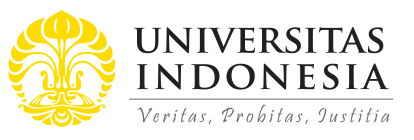
Abstract
Ragunan zoo is the biggest zoo in Jakarta that becomes one of the most favorite recreation areas during holidays. Unfortunately, the existing signage in the zoo does not provide simple wayfinding and good signage systems that resulted in the confusion of visitors in exploring the zoo. Beside recreation, zoo also functions as, educational and conservational areas. Confusing wayfinding and signage make visitors have less time to enjoy the exhibits and reduce visitors’ motivation to fulfill the education and conservation goals. This paper analyzes existing wayfinding and signage systems at the Ragunan Zoo and proposes a more comprehensive system by using some basic principles of wayfinding and signage design. We collaborate with the management of the Ragunan Zoo in developing community park and conducted a field research between February and October 2017. The study includes analyzing visitor’s movement patterns and mapping the location of animals and facilities as well as visitors’ behavior in relation to wayfinding and connection to the environment. The method of this study is qualitative such as analyzing patterns of movement and connecting to environment. Field research and observation are also parts of the approach that our team use in order to map areas in the zoo, so that we understand the needs of both visitors and the management. The paper argues that by applying basic principles of wayfinding such as structuring space and information as well as good signage designs such as visual representation for the Ragunan Zoo, visitors will have more time to enjoy their visit and involve in education and conservation activities.
References
Arthur, P. and Passini, R. (1992). Wayfinding-People, Signs, and Architecture. New York: McGraw-Hill.
Benton, D. P. (1979). Intergenerational Interaction in Museums. Ed.D. diss., Columbia University Teacher's College.
Calori, C., & Vanden-Eynden, D. (2015). Signage and Wayfinding Design: A Complete Guide to Creating Environmental Graphic Design Systems. New Jersey: John Wiley & Sons.
Coates, K. E. A. (2014). Introduction to Information Design. London: Laurence King Publishing. Retrieved from http://ebookcentral.proquest.com/lib/indonesiau- ebooks/detail.action?docID=1876178
Cornell, E. H. , and C. D. Heth, (2000). Route Learning and Wayfinding. In Cognitive Maps: Past, Present, and Future, ed. R Kitchin and S. Freundschuch, 66-81. London: Routledge.
Cornell, E., Sorenson, A., & Mio, T. (2003). Human Sense of Direction and Wayfinding. Annals of the Association of American Geographers, 93(2), 399-425. Retrieved from http://www.jstor.org/stable/1515565.
Correa de Jesus, S. (1994). Environmental Communication: Design Planning for Wayfinding, Design Issues, Vol. 10, No. 3, 32-51.
Csikszentmihalyi, M. (1990). Flow The Psychology of Optimal Experience. New York: Harper Perennial. Also see Richard Buchanan's review of Flow in Design Issues, 8 no. 1 (Fall 1991): 80-1.
Gibson, D. (2009). Wayfinding Handbook. New York: Princeton Architectural Press.
Golledge, R. G. (1995). Primitives of spatial knowledge. In Cognitive aspects of human-computer interaction for geo? graphic information systems, ed. T. Nyerges, D. Mark, R. Laorini, M. Egenhofer, 29-44. Dordrecht: Kluwer Academic.
Hart, R.A., GT. Moore. (1973). The development of spatial cognition: A Review. In Image and Environment. ed. R. M. Downs and D. Stea. 246-88. Chicago: Aldine.
Kling, B. K. T. (2013). Signage - Spatial Orientation. München: DETAIL. Retrieved from http://ebookcentral.proquest.com/lib/indonesiau-ebooks/detail.action?docID=1383647.
Kozlowski, L. T, and K. J. Bryant. (1977). Sense of direction, spatial orientation, and cognitive maps. Joumal of Experimental Psychology: Human Perception and Performance 3:5.
Kropf, M. B. (1989). The Family Museum Experience: A Review of the Literature. Journal of Museum Education 14(2), 5-8.
Lars, L. L. (1991). Zoo Interpretation and Exhibit Design: Two Sides of the Same Coin. The Journal of Museum Education 16(2), 4-6. Retrieved from http://www.jstor.org/stable/40478892. Accessed: 26-09-2017.
Meuserdan, P & DPogade, D. (2010). Construction and Design Manual Wayfinding and Signage. Singapore: Page One Publishing.
Minkler, M. and Wallerstein, N. (Eds.). (2003) Community-based Participatory Research for health. San Francisco, CA: Jossey-Bass.
Norberg-Schulz, C. (1971). Existence, Space, and Architecture. New York and Washington: Preager Publishing.
Poulin, R. (2012). Graphic Design and Architecture, A 20th Century History. Osceola: Rockport Publishers. Retrieved from http://ebookcentral.proquest.com/lib/indonesiau- ebooks/detail.action?docID=3399636
Taylor, S. (1986). Understanding Process of Informal Education: Naturalistic Study of Visitors to a Public Aquarium. Ph.D. diss., University of California, Berkeley.
The Jakarta Post, (2017). Ragunan Zoo holidaymakers surprised by Jokowi. June 30, 2017. Retrieved November 2017. https://www.pressreader.com/indonesia/the-jakarta-post/20170630/281651075122403. See also in the Jakarta Post Ragunan Zoo, Ancol gear up for annual visitor influx. July 5, 2017. Retrieved 19 December 2017. http://www.thejakartapost.com/news/2016/07/05/ragunan-zoo-ancol-gear-up-for-annual-visitor-influx.html
Vit, A. P. B. G. G. (2009). Graphic Design, Referenced. Osceola: Rockport Publishers.
Zwaga, H. B. T. H. H. (1998). Visual Information for Everyday Use. London: CRC Press.
Recommended Citation
Lukito, Yulia Nurliani and Arvanda, Enira
(2017).
Improving wayfinding and signage systems of the Ragunan Zoo as a way to enhance visitors’ quality time.
ASEAN Journal of Community Engagement, 1(2).
Available at: https://doi.org/10.7454/ajce.v1i2.76







